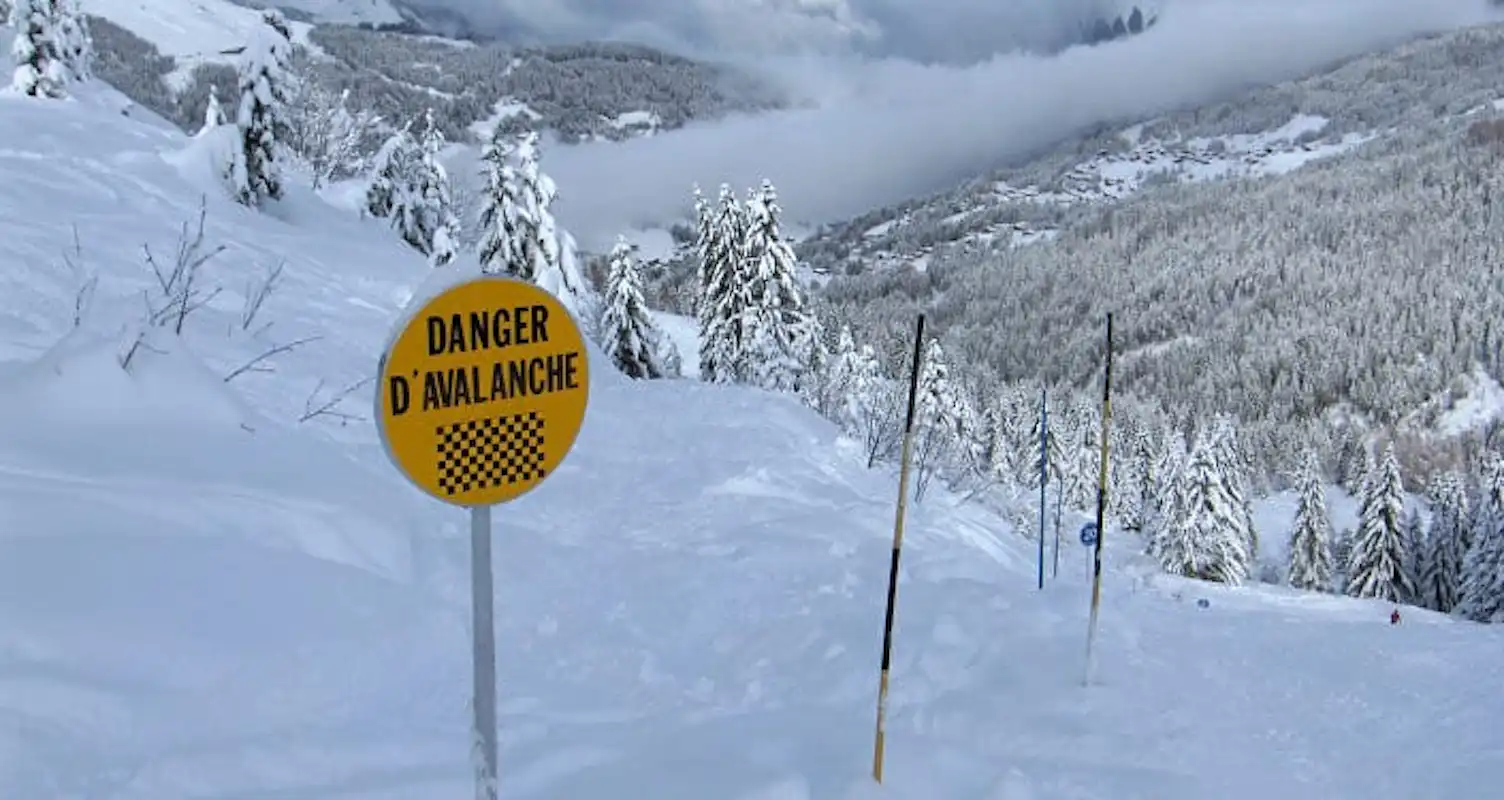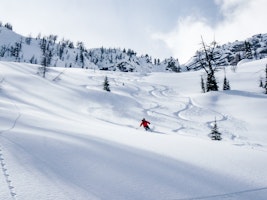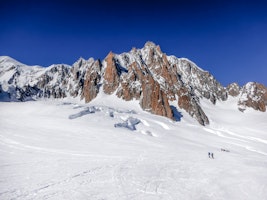Whether you are an avid mountaineer, a backcountry skiing enthusiast, or just starting to get exposed to high mountains and adventures in the snow, it is vital to take the necessary precautions to stay safe. While the outdoors promise amazing experiences and unforgettable wonderlands, they can also pose a risk, and being informed regarding what these risks can be, how and when they can happen, and what you should do in the case of an emergency can potentially determine your survival in some cases.
Stats show that there is a global increase in mountain accidents of around 223% since 2005. Many of these accidents can be avoided by going on outdoor adventures with a certified guide that is trained and knows the region and conditions well, and also by acquiring adequate knowledge and mountain skills before setting off on an adventure. Understanding how as humans we can actually trigger avalanches or expose ourselves unnecessarily to dangerous situations can lead us to prevent them in the first place, and learning to use rescue equipment (such as airbags, DVA, probe, shovel, etc.) properly can substantially minimize the consequences of an accident in the worst case scenario.
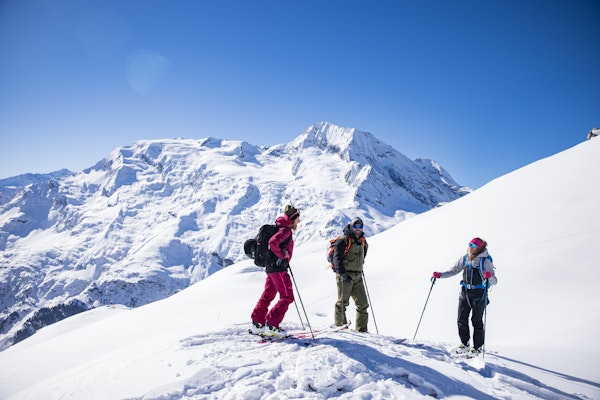
Photo courtesy of WEMountain
In this article, we will give you an overview of avalanches, rescue equipment, general mountain safety, and we will also point you in the right direction if you wish to train and acquire extra skills for your adventures, which we highly recommend. You can acquire online avalanche training, attend a short avalanche course near you, or learn safety skills on a more extended, comprehensive program, and this will be of great added value to you on your guided adventures in the mountains. Read on and stay safe!
What is an avalanche?
Avalanches are great masses of snow, rock, and/or ice that can come down a mountain at a given time. They occur when the snowpack, which is made up of different layers of snow, is disturbed, usually by an additional load on its surface. There are different causes and types of avalanches, and being able to evaluate weather, topographic conditions, and snow are vital for risk assessment and prevention.
Climatic conditions including visibility, temperature, and wind are one aspect to consider. In terms of topography, terrain, slope aspect, and slope incline come into play. Finally, you should be able to evaluate snow. This includes a) the intensity of a snowfall, b) whether the snow is wet, or dry and loose, or dry and cohesive (and what this implies in terms of effort and effect), and c) the snowpack, which consists of three layers – a base, formed by the first snowfalls of the season; the middle, which is formed by all the layers between the base and the surface, and the top layer of recent snow, or surface, which is where you will be skiing.
Avalanche Causes
Wind scours the surface of the snowpack and transports snow, weakening its bond to the snowpack. Wind-deposited snow increases the load on the snowpack. Wind creates irregularities, wind slabs, and cornices.
Precipitation, including rain and snow, affects the cohesion of the snowpack and its stability.
Slope aspect, i.e. the orientation towards-away from the sun, can affect the snow quality and snowpack structure.
There is also a higher risk of avalanche on steeper slopes, so the slope incline is another factor. Avalanches typically occur on inclines between 25° and 45°.
Human activity including the weight of a skier can affect the snowpack, as can the vibrations of snowmobiles and other vehicles.
Geological vibrations and movements and terrain-related aspects such as summit slopes, glaciers, open slopes, rolls, among others, increase the probability of an avalanche. To this effect, it is important to know where you can ski safely and where you are exposing yourself.
Temperature rises that cause snow to melt and alter the cohesion and stability of the snowpack.
Types of Avalanches
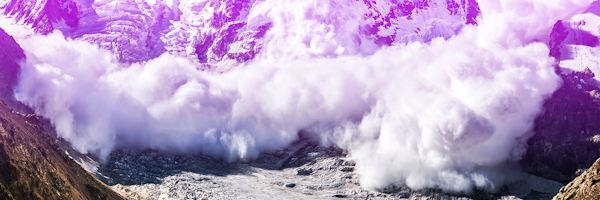
Photo courtesy of WEMountain
Loose snow avalanches: also called “sluffs”, these avalanches are typical of fresh snowfalls, or on steep terrain when the snowpack is not very solid. They can also occur after a temperature rise and consist mostly of dry powder snow.
Slab snow avalanches: these are the most dangerous types of avalanches. They are caused when a compact layer of snow (slab) is lying on top of a weak layer of snow and a small fracture in the bottom layer expands due to a natural or human “trigger”, causing the slab to slide down the slope.
Powder snow avalanches: usually result from slab snow avalanches and can cause powder clouds and come down at very high speeds.
Wet snow avalanches: these commonly occur in Spring, when there is a change in temperature, a lot of sunshine, or rain which results in the presence of liquid water in the snowpack that weakens the snow binding.
Gliding avalanches: similar to slab snow avalanches, gliding avalanches also derive from a fracture with the difference that the whole snowpack is generally released and they are not triggered by humans. They typically occur when the snowpack forms over a smooth base such as a pasture or rock slab.
Levels of Avalanche Danger
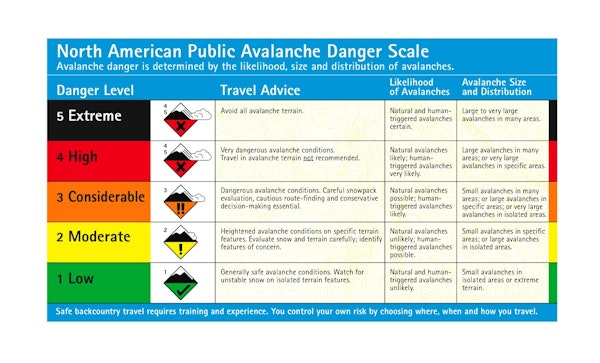
Avalanche Equipment:

Photo courtesy of guide, Josh
The standard set of avalanche rescue equipment consists of a beacon, probe, and shovel. However, knowing how to pick the right ones, and actually using them properly is essential to their effectiveness.
Avalanche beacon (or transceiver): a 457 kHz radio transmitter and receiver that is used to locate the person if they are buried under snow.
Avalanche probe: an aluminum or carbon rod used to probe through the avalanche debris to pinpoint the exact location of a victim and determine how deep they are buried.
Avalanche shovel: a shovel used to dig out a buried victim.
Avalanche survival gear is used by the person caught in the avalanche and consists of an airbag and an avalung.
Avalanche airbag backpack: survival rates are much better among victims that are not buried by the snow, and this is where the avalanche airbag comes in. When activated, these backpacks increase floatability and keep you at or near the surface through the principle of inverse segregation.
Avalung: a complementary device that allows you to breathe fresh air directly from the snowpack when buried by an avalanche. However, it is difficult to find the mouthpiece when caught in the avalanche.
Other equipment you should also have includes a helmet and padding as they can protect you from bangs against trees and rocks. Keep in mind that having the proper equipment in general, including skis, boots, poles, clothing, and even the right sunglasses, will give you better mobility, insulation, visibility, and overall protection, and should also be taken into account in terms of comfort, adequacy, and safety. Additionally, you should familiarize yourself with the equipment options and make the right choices to increase the effectiveness in case of an emergency.
Basic Avalanche and Mountain Safety Protocols:
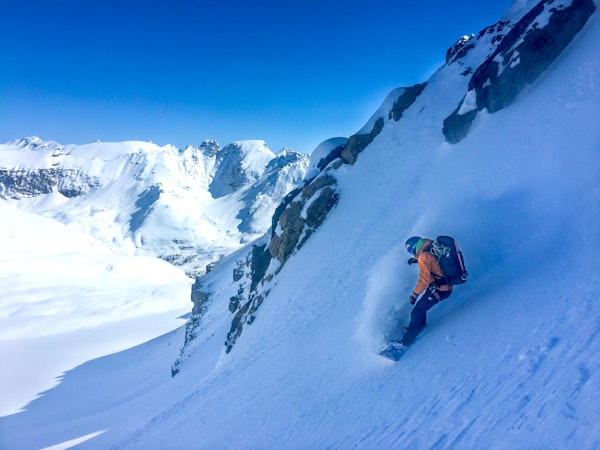
Photo courtesy of mountain guide, Jeff
Know yourself and learn to moderate the tendencies that lead you to expose yourself unnecessarily. Gauge your stress levels, your motivation, your response to fear, and other emotional and psychological factors that could put you at risk.
Be well prepared physically. This includes nutrition, hydration, training, and rest.
Have clear objectives, well-planned out routes, and good overall prep. work. Be willing and able to adapt those plans to the conditions you are faced with when you actually go out on your adventure.
Check the right information sources (such as the avalanche bulletin), and use the right decision support tools (GRM, Nivotest, 3*3 method, smartphone apps)
Use comfortable, warm, adequate equipment and be familiar with it before you go out on the mountain. Test everything before your trip.
Follow adequate mountain and group protocol and respect distancing, safe places to stop, and other essential rules.
Communicate adequately regarding routes and expectations and have emergency numbers handy.
Learn what you should do if you are carried away by an avalanche or if you are a rescuer.
If you don’t know the terrain, or you don’t have experience in the mountains, go with a certified mountain guide.
Keep in mind that the vegetation protects against avalanche and erosion and should not be tampered with. This goes for all wildlife.
Avalanche Training and Mountain Safety Courses:
Avalanche Training with WEMountain

Photo courtesy of WEMountain
Since 2022, Explore-Share has begun to collaborate with WEMountain, an education platform (PaaS) for skiers and snowboarders interested in learning about mountain safety. Through the WEMountain platform, you can take online courses, then put what you learned online to practice by joining on-site experiences, receive exclusive rewards, and be part of a community that is conscious of mountain risks.
The courses are interactive, offer certifications, and can be done in English or French. They follow the A2R system, which centers around avoiding risk (first and foremost), reacting positively, and managing a successful rescue, with a focus that is not only technical but also behavioral using the Mountaineering Human Factor system (MHF). This approach will not only teach you more about avalanches and safety, but also about yourself, and how you respond to risk, to ego, and to fear.
The WEMountain courses are designed by industry leaders, professional skiers, and guides. All Explore-Share users can access their courses with a 20% discount (by entering the code saferwithE-S in the coupon section).
WEMountain expert, Dominique Perret, shared his motivation behind this project and the collaboration with Explore-Share:
“At the end of a beautiful and long Freeride career that took me beyond my expectations, I realized that I had lost nearly 30 friends during the past 3 decades! Few sports have such a poor record… I thought it was time to give back to this passion that brought me so much and that’s how I came up with the idea of creating, in collaboration with the large network of experts that I had the chance to build over time, this international training program for riders from all over the world and it is quite naturally that a partnership with Explore & Share was born, they were the only ones to offer organized adventures with a very high level of competence around the world! The cooperation was obvious”

Boost your safety skills with the online courses of WEMountain
Having an online training platform designed with this level of expertise is definitely an asset for the skiing and mountaineering community that perfectly complements onsite training and guided adventures. Make sure to sign up today!
Top Avalanche Training Courses around the World
Putting knowledge to practice on the terrain and in the mountains is essential to complete any theoretical training, and we have plenty of programs around the world to help you perfect different skills that are essential to staying safe. Below you will find a small selection, but there are plenty of options, and surely one that is suited to your preferences and needs.
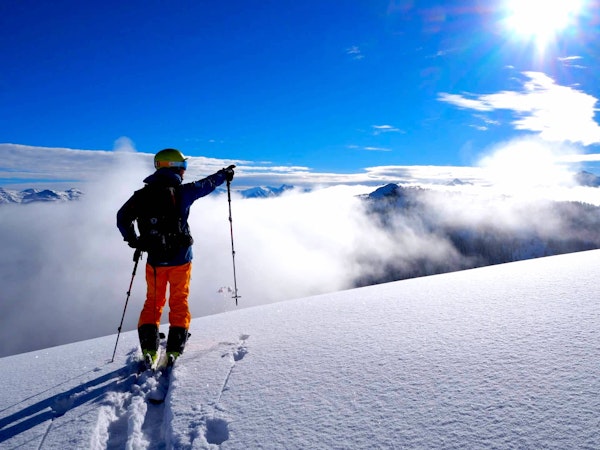
Photo courtesy of guide, Mathias
Europe
Bulgaria: Bansko splitboarding introduction course
France: Backcountry skiing and avalanche training weekend in Val Cenis
Iceland: 3-day avalanche training course
Switzerland: Avalanche training for beginners around Zermatt
North America
United States: 3-day avalanche safety course in Utah
South America
Asia
Staying safe in the mountains is essential. Enjoy your adventures with a certified guide and educate yourself to make sure that your experiences are both exhilarating and joyful!
